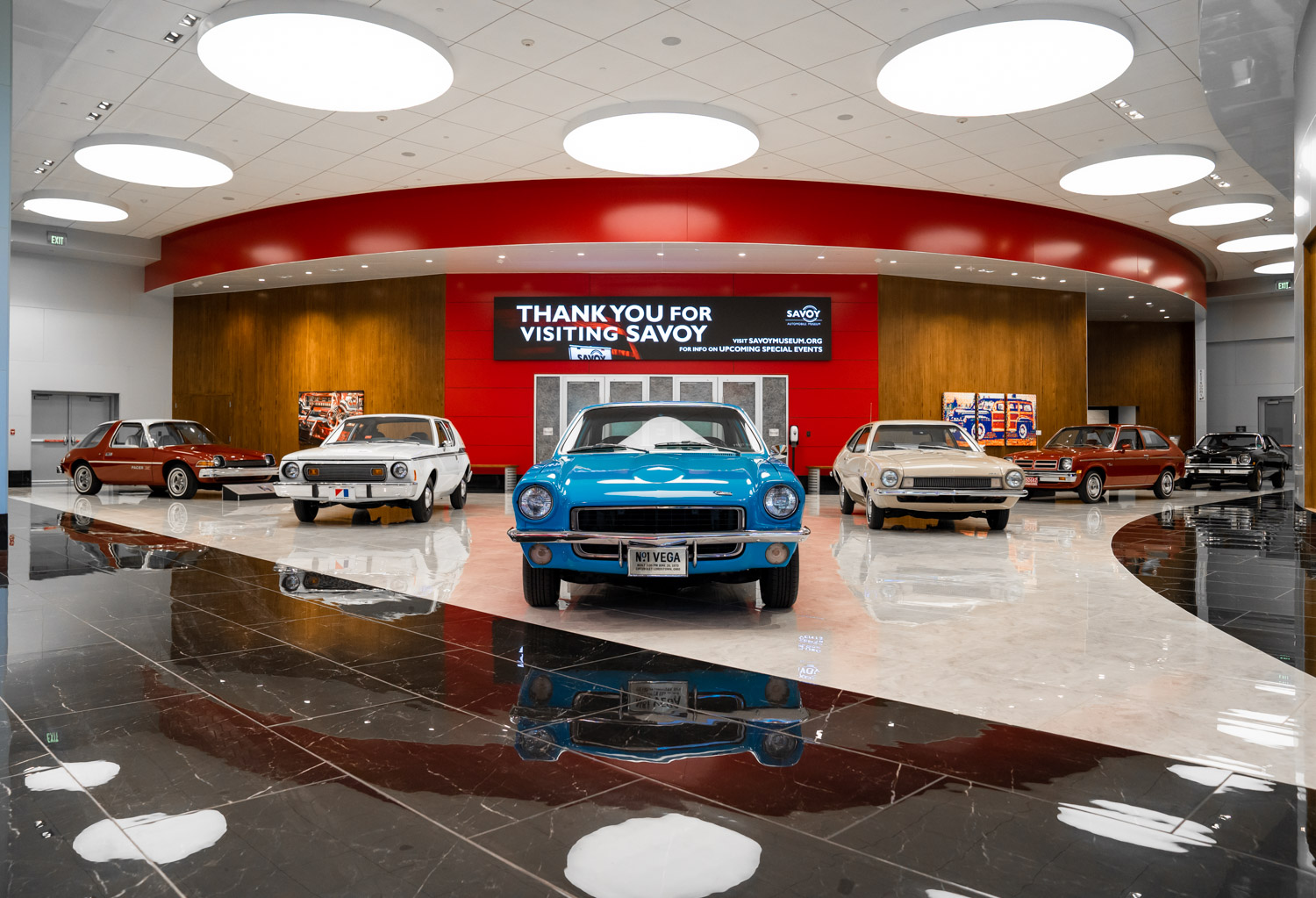Savoy was recently mentioned in Forbes. Click here to read the article, or read below.
–
by Chadd Scott
Cartersville bills itself as “Georgia’s Museum City” thanks to the Savoy Automobile Museum, the Tellus Science Museum and the Booth Western Art Museum, each preeminent among their fields.
A Western art museum–think cowboys and Native Americans of the Plains and Southwest–may seem like an odd fit for west Georgia, but it works at the Booth. With the largest exhibition space in the world for Western art–sorry Santa Fe and Denver–the permanent collection at the Booth features the icons of the genre–Frederic Remington, C.M. Russell, Maynard Dixon–but its strength is in contemporary Western art since 1965.
Anyone overruled in vacation planning sacrificing mountains and mesas for the Mouse can catch a whiff of the West through stunning landscape paintings of New Mexico and the Rockies at the Booth. The enormous scale of the museum allows it to display a number of staggeringly large artworks that may even impress angsty teens. The Booth’s “Sagebrush Ranch” gallery is hands-on for little ones.
The museum has a fine sampling of contemporary Native American art, premiere rotating exhibitions, and galleries devoted to the U.S. presidents, and contemporary art related to the Civil War. Those last two will hit different visitors very differently generating responses ranging from extreme pride to extreme disgust.
The Booth is closed on Mondays.
When the weather’s good, the Etowah Indian Mounds State Historic Site three miles out of downtown makes for a worthwhile excursion. A small visitor’s center leads guests to the one-time communal area featuring a number of mounds, the tallest of which stands 63-feet. Stairs lead to the top.
This area, and for hundreds of miles in every direction, was once home to what have become known as the Mississippian people–mound builders. Between roughly 1000 and 1600 AD, hundreds of communities with residents numbering into the thousands were spread across the southeast along rivers–here, the Etowah River. Inhabitants engaged in trade networks covering the continent, developed distinct languages and cultural practices, hunted, gathered and planted corn, beans and squash.
The historic site is open daily.
Additionally noteworthy is the site’s substantial reintroduction of native grasses on the grounds which bring in a wonderful variety of butterflies and dragonflies.
Overnight
Seven miles east of Exit 290 on State Road 20 travelers will find another surprise: a winery. Big Door Vineyards grows vines on a small plot of land producing a boutique suite of varietals much better than you’d expect. The vineyard is open daily with a tasting room, tours and full food service, again, much better than you’d expect.
If you feel like calling it a day in Cartersville–good choice–stay at the Courtyard by Marriott one mile from Exit 290. Opened in spring of 2021, it has a small outdoor pool, a better than average fitness center, excellent free wi-fi and the rooms are reasonably priced and equipped with everything you’d expect from a major brand property.
What it also has that you don’t expect from a branded hotel is solar panels providing power. I’d never go so far as to consider the hotel “sustainable,” but with solar panels and inclusion of a small number of native plants in its landscaping, the Courtyard by Marriott in Cartersville is more environmentally friendly than 99% of the chain hotels along I-75.
Anyone looking for a dining experience more refined than pizza, grits and ice cream will be pleased by the Appalachian Grill back downtown. This part of Georgia is hilly, the southern end of the Appalachian Mountains. Fish, seafood, steaks and more are served Tuesday through Saturday less than four miles from the Courtyard. Grab a nightcap in the tasting room at Drowned Valley Brewing Company one block up and over from the restaurant.
Your vacation plans may not take you to Cartersville, but if they take you by Cartersville, take advantage of Cartersville.


